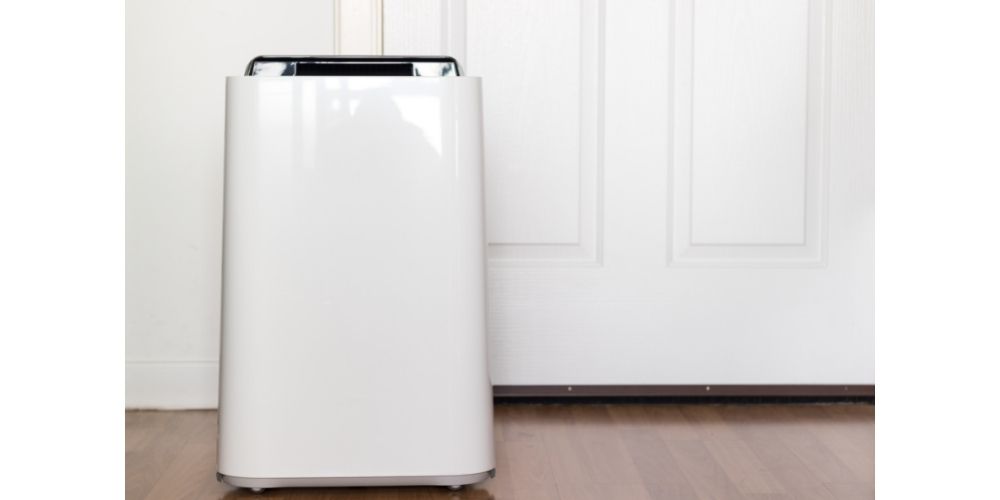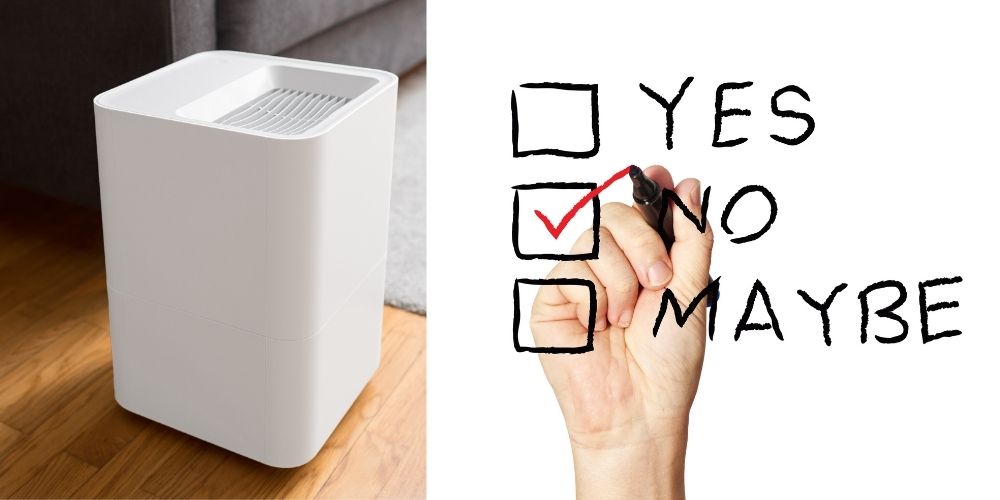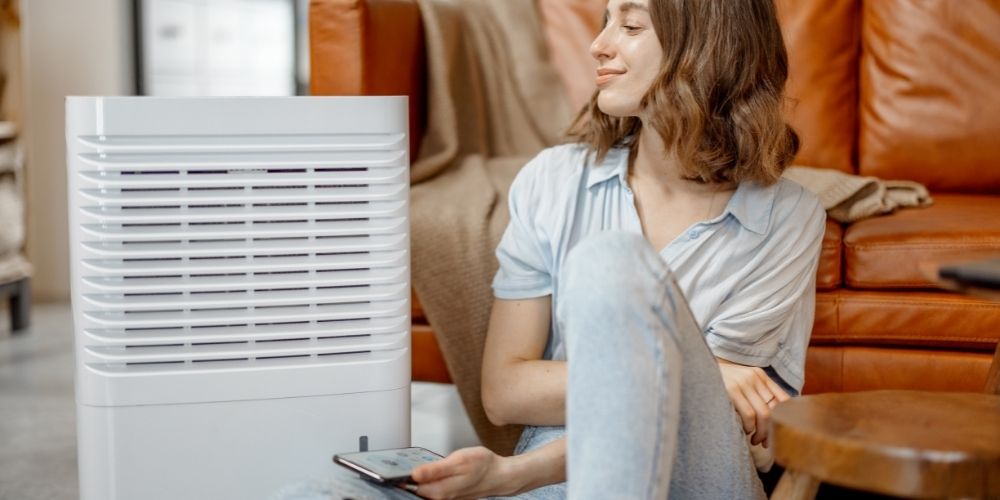Where to place air purifier?
Buying a good air purifier is the first step in improving the air quality of your homes. Considering the times we live in, clean air is imperative to keep good health. It is even more so because the number of air pollutants continues to increase, giving birth to any number of illnesses, including respiratory illnesses, skin allergies, and other airborne diseases.
However, it is equally important to know where to place the air purifier for maximum effectiveness. After all, we can’t lose sight of the reasons why we are investing in an air purifier.
Can you place air purifier anywhere?
The simple answer is No. You cannot place an air purifier anywhere you like, not if you want to reap the benefits of one. While the air purifier may contain a combination of HEPA filter and activated carbon filter to block the pollutants, it will only serve well if placed in the right location. The location of the air purifier must be strategically thought out, keeping the room’s dimensions, the human traffic in the rooms, the purpose of the room, such as bedrooms, kitchens, or exercise rooms.
Therefore, the two critical factors of air purifiers include airflow and safety. Below are some important considerations after you bring in a new air purifier.
Important Things To Consider Before Placing Air Purifier?

Closest to the Pollutants (Dust, Odor, Smoke)
You will know best the area where most of the pollutants congregate. For instance, your kitchen can hold on to odors long after you have cooked in it, your basement may be moldy, or your rooms show a lot of pet hair or dander. Placing an air purifier at the source is ideal. The HEPA filter can remove mold spores, dust, and pet dander, while the carbon filter will remove all bad odors.
a) Know the Coverage Area
The size of the room you want to purify is the next factor to consider. A small air purifier for a large room will be ineffective. Alternatively, a large air purifier for a small room will also be a waste of energy.
Therefore, it is best to find the CADR (Clean Air Delivery Rate), which will tell you how much air can be filtered per hour in CFM (Cubic Feet Per Minute). The rule of thumb is that the CADR should be equal to two-thirds of the room size.
b) Adequate Height
There are two types of airflow – forward and upward. Indoor air tends to move vertically as well as horizontally. Air purifiers work best when placed three to five feet above the ground so that they can catch horizontal and vertical air movement.
Smaller units placed on a table can take advantage of the vertical airflow. Larger units can be either portable or mounted on the wall to take advantage of the horizontal airflow.
c) Enough Airflow
Air purifiers draw the air in and clean it. But, the more air that is drawn in, the faster the cleaning process. So, air purifiers work well in open areas. Placing them near a window or doorway will work best.
Air, when it moves, has enough energy to move dust and other particles and distribute them throughout the house. Placing air purifiers at the entry points or the front door will mean that they capture most of these polluting elements before they can spread through the house. This is also why placing air purifiers in corners would be a mistake.
Where should you not put an air purifier?

We have seen the best location for an air purifier to do its best. Now, let’s consider where you should not place an air purifier. Regardless of how strong the airflow is, an air purifier may not be able to capture all pollutants from every corner.
Some areas of your room or home are simply not suitable because of a variety of reasons, including but not limited to a lack of free airflow, high humidity levels, or too many obstacles.
1. Near Small Electronics
Air purifiers work on wavelengths just as other electronic items do. Placing air purifiers too close to other electronic items will make them vulnerable to electronic interference. Therefore, it is advisable to leave around five feet of distance between electronic items and the air purifying unit. You may be extra cautious and not place the air purifier near slightly larger electronic items such as TVs or stereos.
2. Tight Spaces and Corners
Air purifiers work by circulating air through their vents, with most of them having front-facing vents. Blocking these vents by placing the air purifiers in corners or tight spaces makes the air purifiers ineffective. A foot of space around the unit will ensure that the entire room receives the cleaned air instead of just the corner in which it is placed.
A few feet of clearance on all sides is necessary for air purifiers. For instance, placing the unit under a shelf will restrict the airflow and clean the air only in and around the shelf.
3. Beside or Below Tables
Air purifiers work best when there is free airflow, which means any type of obstacle is best avoided. Placing an air purifier beside or below tables or any other furniture means that the unit will not be able to draw in air from the entire area and, as a result, will not circulate clean air through the room.
4. Heat Sources
Keeping an air purifier too close to furnace vents or close to open windows where direct sunlight falls for several hours may not be a good location. Other heat sources are cooking areas, or stove tops, ovens, as cooking generates heat as well as humidity.
Since air purifiers get heated during operation, keeping them near a heat source may cause them to overheat. Overheated units can damage the air purifier and decrease the lifespan of the unit.
5. Near High Humidity
Air purifiers clean air and do not remove the excess moisture from the air. They also do not add moisture to the air. Moreover, high humidity can actually damage the air purifier. For instance, if the air purifier absorbs too much moisture from the humid air, it will lower the lifespan of the filters as the moisture will clog the filters making it necessary to replace the filters frequently. It can also cause condensation damage to the unit and the continued impact of excess moisture will make the unit perform poorly.
How to use air purifier effectively?

A few simple steps can be taken to use an air purifier effectively. Essentially, an air purifier must be placed so that the air circulation is not blocked and may also be a few feet off the floor to catch odors and smoke in the air.
Like any other appliance, air purifiers will require routine maintenance of filters and sensors for optimum performance.
➫ Maintain Filters
Many air purifiers have washable pre-filters that can be washed frequently. The mesh pre-filter can be washed with lukewarm water and liquid detergents. You can reinstall them after they get dry. The pre-filter can be vacuumed if they are not washable.
The HEPA filters will need replacing regularly. The intake and outlet grills can be cleaned by wiping the dirt and grime with a microfiber cloth.
➫ Clean sensor lens
If the air purifier comes with a dust sensor lens, it can get covered with dust and debris. The glass lens is highly sensitive and will need to be cleaned at least once a month if you want to get accurate readings from the sensor. During certain seasons, such as pollinating seasons, it may need cleaning more than once a month.
➫ Leave air purifiers on 24/7
Some air purifiers have an auto-mode. The auto-mode adjusts the filtration process according to the air quality present in the room. But those that don’t are best left ON at the lowest fan speeds all the time.
You can leave air purifiers ON 24/7 as they will continuously capture airborne pollutants. Running them 24/7 will not increase your energy bills.
Moreover, air purifiers that are left ON do not necessarily work harder. They only work continuously and ensure that the room remains free of air contaminants. It makes it easier for you to step into rooms that are always clean with high-quality air.
FAQ Section
1. Can you put an air purifier on carpet?
Textiles such as curtains, carpets, and upholstery create a haven for dust particles, and they trap these particles. They also tend to block the filter and make the air purifier work harder to purify the air. In effect, the air purifier must be placed where the air flows freely.
2. Can you put air purifier on a table?
Portable air purifiers can be placed on a table and nearest the source of pollutants. Placing it on a table and not behind or below a table will work best.
3. Can you move air purifier from room to room?
Yes, you can move the air purifier from room to room, provided it is compact and easily moveable. As long as there is enough airflow in a room and there is more space to place an air purifier, it can be moved anywhere in the house.
Plug-in air purifiers are portable and can be moved easily where it is most needed.
4. Can you run air purifier with window open?
It is best if the air purifiers are placed in an enclosed space. So, the windows and doors must be closed when the air purifier is ON. If the room is left open, the air purifier will take much longer to clean the indoor air, and it will be a waste of energy.
However, ventilation is essential, and the windows will need to be opened occasionally to draw in the outdoor air that is at least a little fresh.
5. Where should an air purifier be placed in a small bedroom?
The placement of an air purifier depends on the size of the room. For instance, you would need to place the unit around six to ten feet from the head of the need. This is to ensure that the air does not blow directly in your face as that may disturb your sleep. Such a direct flow of air in your face can also cause a mild headache in the morning.
Ideally, the air intake faces the bed to ensure that the air around the bed gets filtered so that you can breathe easily.
6. How far from the wall should an air purifier be?
All air purifiers are not the same or have similar inlets. It is advisable to have the inlet at least 15 cm or 6 inches from the wall. Many air purifiers are so large that they need to be placed on the floor. Others are more compact and can be placed in bathrooms, desktops, kitchen counters, etc.
But, wherever it is placed, it is essential that the area surrounding the unit is clear enough for good airflow.
7. How far should air purifier be from bed?
Air purifiers should be placed anywhere between six and ten feet from the bed. If it is placed too close to the head of your bed, it can make it uncomfortable for your sleep and keep waking you up.
Moreover, such a direct hit of air in your face or head can leave a lingering headache throughout the day. Allowing enough open space around the bed is ideal as the airflow will be freer without any obstacles.
Wrapping Up
Let’s remember that air purifiers have a singular purpose of maintaining clean air quality, be it in your home or in your office. The placement of air purifiers plays a large role in keeping the indoor air quality of your home clean and healthy.
Clearly, using it the right way by placing it in proper locations, performing regular maintenance, cleaning filters, and operating it as per the manufacturer’s instructions are all necessary steps to take if you want to get the best out of your air purifier.

About The Author
Olivia — a self-confessed air quality addict — is a home climate enthusiast, fresh air advocate, and someone with deep personal experience and knowledge about mold extermination. Her work was mentioned in countless notable humidity publications. Previously she was an editor at Mold Remediation.